Author: Steve Thanos
While beer is often described as a concoction made with water, malt, hops, and yeast, many brewers rely on a bevy of adjuncts to create unique flavors, in fact some historical styles call for such additions. Witbier is one example of a beer that’s made with adjuncts, namely coriander and orange peel, the latter comes in two main varieties– sweet and bitter.
According to numerous online references, sweet orange peel tends to impart beer with a more pronounced orange character while bitter orange peel contributes a more general citrusy character and slight bitterness. Typically, brewers of Witbier stick to using bitter orange peel, though there’s no hard and fast rule about this, and many brewers have reported satisfactory results using sweet orange peel.
Admittedly, I don’t brew or drink much Witbier, but I’ve tried examples made with both sweet and bitter orange peel in the past. While both types of orange peel seemed to contribute the citrus character expected for this style, I’ve never compared beers made with either side-by-side and designed an xBmt to see just how different they are for myself.
| PURPOSE |
To evaluate the differences between a Witbier made with sweet orange peel and one made with the same amount of bitter orange peel.
| METHODS |
For this xBmt, I went with my house Witbier recipe, which I felt was simple enough to allow any differences caused by the type of orange peel used to shine through.
Prevalence Of Ego
Recipe Details
| Batch Size | Boil Time | IBU | SRM | Est. OG | Est. FG | ABV |
|---|---|---|---|---|---|---|
| 5.5 gal | 60 min | 13.3 | 3.6 SRM | 1.052 | 1.007 | 5.91 % |
| Actuals | 1.052 | 1.007 | 5.91 % | |||
Fermentables
| Name | Amount | % |
|---|---|---|
| Pale Red Wheat | 4 lbs | 44.44 |
| Pilsner Malt | 4 lbs | 44.44 |
| Oats, Flaked | 1 lbs | 11.11 |
Hops
| Name | Amount | Time | Use | Form | Alpha % |
|---|---|---|---|---|---|
| Magnum | 10 g | 60 min | Boil | Pellet | 12 |
Miscs
| Name | Amount | Time | Use | Type |
|---|---|---|---|---|
| Coriander Seed | 28 g | 10 min | Boil | Spice |
| Orange Peel, Bitter/Sweet | 43 g | 10 min | Boil | Flavor |
Yeast
| Name | Lab | Attenuation | Temperature |
|---|---|---|---|
| Whiteout (B44) | Imperial Yeast | 76% | 32°F - 32°F |
Notes
| Water Profile: Ca 40 | Mg 13 | Na 9 | SO4 10 | Cl 14 |
Download
| Download this recipe's BeerXML file |
After collecting 2 sets of water and lighting the flame to get them heating up, I weighed out and milled the grains.
Once the water for each batch was adequately heated, I incorporated the grains then checked to make sure both were at the same target mash temperature.
While the mashes were resting, I prepared the kettle hop additions.
Once each 60 minute mash was complete, I removed the grains then boiled the worts, adding the different types of orange peel along with coriander with 10 minutes left.
At the end of the 60 minute boil, I quickly chilled the worts with my Hydra IC.
Refractometer readings showed both worts achieved the same target OG
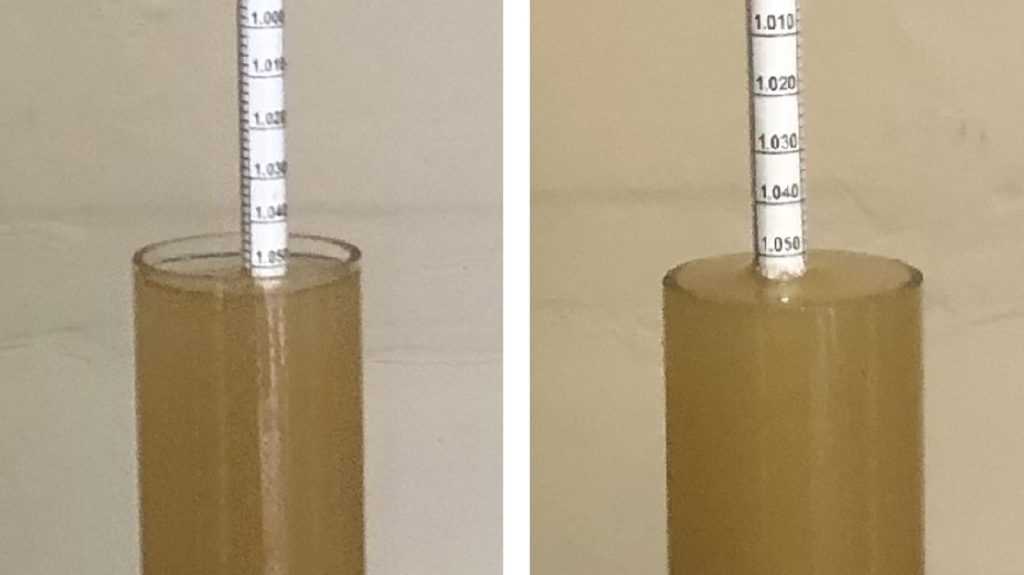
The filled fermenters were placed in my chamber and left to finish chilling to my desired fermentation temperature of 68°F/20°C for a few hours before I pitched a pouch of Imperial Yeast B44 Whiteout into each.
With signs of fermentation activity absent after 3 weeks, I took hydrometer measurements showing the beers had reached the same target FG.
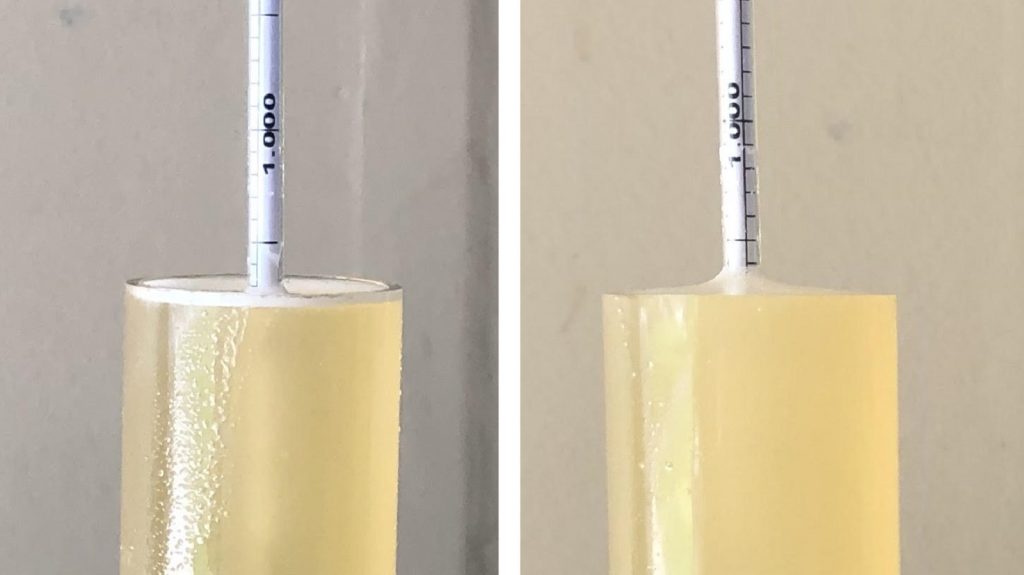
I then transferred the beers into CO2 purged kegs and placed them in my keezer where they were left to condition for a couple weeks before they were ready to serve.
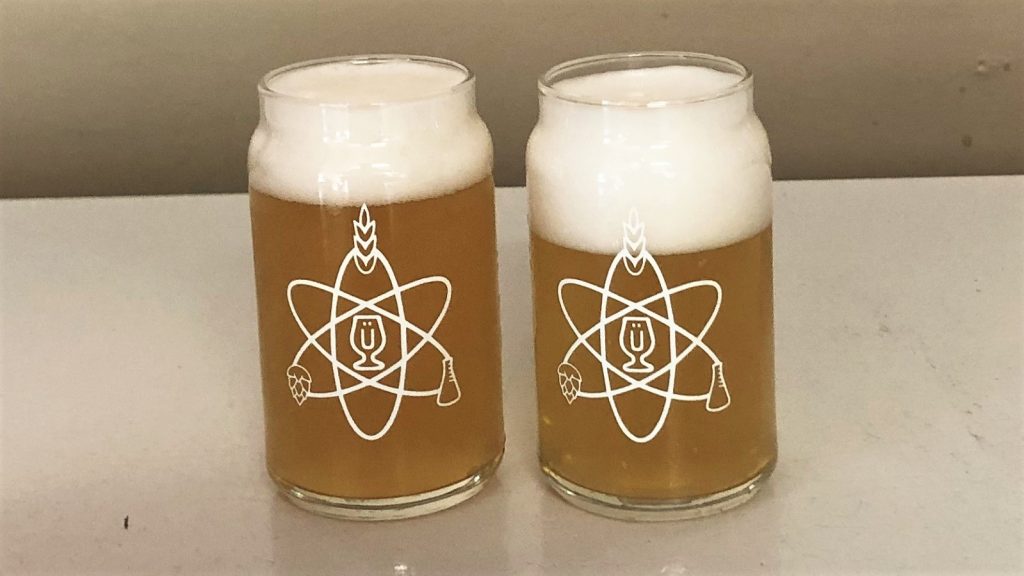
| RESULTS |
Thanks to my homebrew club, Plainfield Ale and Lager Enthusists for allowing me to collect data during our monthly meeting! A total of 20 people of varying levels of experience participated in this xBmt. Each participant was served 1 sample of the beer made with sweet orange peel and 2 samples of the beer made with bitter orange peel in different colored opaque cups then asked to identify the unique sample. While 11 tasters (p<0.05) would have had to accurately identify the unique sample in order to reach statistical significance, only 10 did (p=0.09), indicating participants in this xBmt were unable to reliably distinguish a Witbier made with sweet orange peel from one made with the same amount of bitter orange peel.
My Impressions: Out of the 5 semi-blind triangle tests I attempted, I correctly identified the odd-beer-out 3 times, and those were admittedly guesses. Likely as a function of bias, I initially perceived the beer made with sweet orange peel as having a subtle sweetness in the finish compared to the one made with bitter orange peel, but that basically faded when I was blind to what I was drinking.
| DISCUSSION |
In addition to the 4 standard ingredients used to make beer, brewers have seemingly endless options for adjuncts that contribute fun and unique characteristics. One such ingredient is orange peel, an arguably necessary addition in Witbier that’s available in both sweet and bitter varieties. Despite coming from different orange varieties, some view sweet and bitter peel as interchangeable, as the amount used in a standard batch of beer is quite small. The fact tasters in this xBmt were unable to reliably distinguish a Witbier made with sweet orange peel from one made with bitter orange peel indicates the difference imparted by each was small enough as to be difficult to perceive.
Coming from the C. sinensis orange variety, sweet orange peel is said to contribute a notably more “orangey” flavor that’s widely recognizable, as these types of oranges are commonly consumed. Bitter orange peel comes from the C. aurantium orange variety and is known to lend a more general citrus character with some bitterness. It’s possible the stronger fermentation and coriander flavors in this Witbier covered up some of the nuanced characteristics imparted by either type of orange peel, or perhaps the amount used, as typical as it is, simply wasn’t enough to accentuate the differences.
I’ve been curious about the differences between sweet and bitter orange peel for a while and was a bit surprised with how similar I perceived these beers to be, as I admittedly expected these beer to be easily distinguishable. While I don’t brew Witbier that often, when I do, I’ll likely stick to my typical approach of using the fresh zest of a sweet orange, as it’s easy and contributes a nice orange character.
If you have any thoughts about this xBmt, please do not hesitate to share in the comments section below!
Support Brülosophy In Style!
All designs are available in various colors and sizes on Amazon!
Follow Brülosophy on:
FACEBOOK | TWITTER | INSTAGRAM
If you enjoy this stuff and feel compelled to support Brulosophy.com, please check out the Support page for details on how you can very easily do so. Thanks!


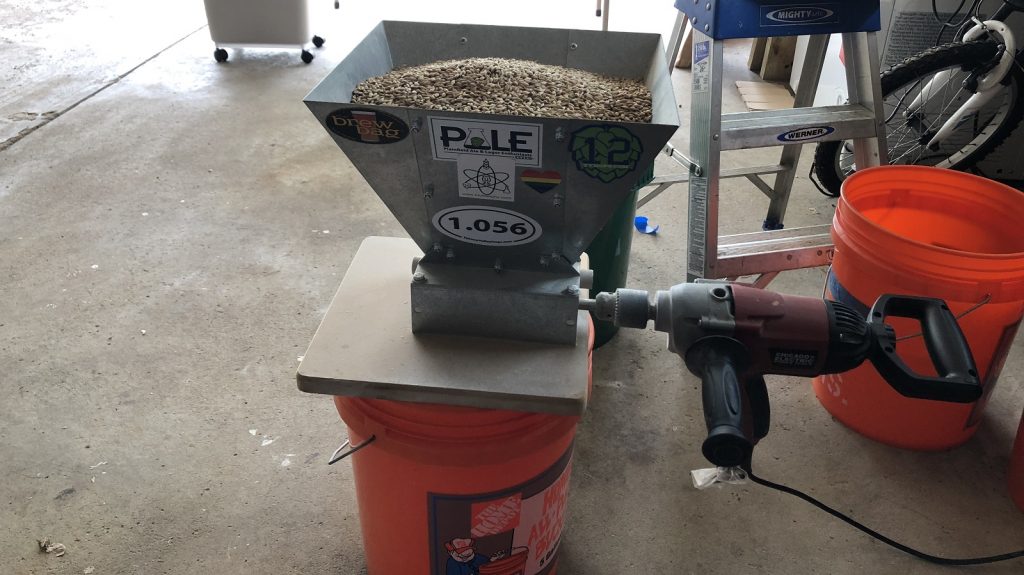
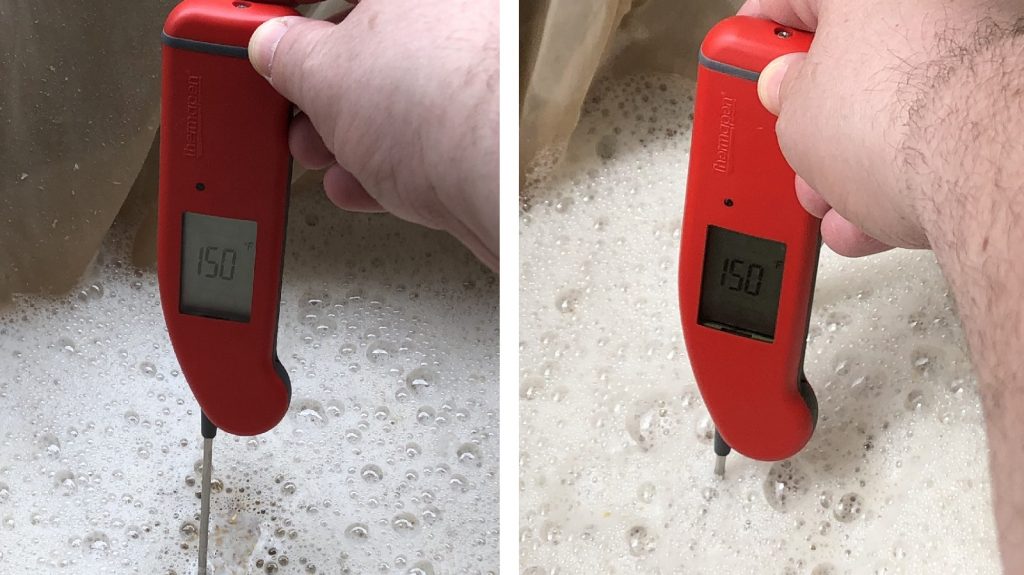
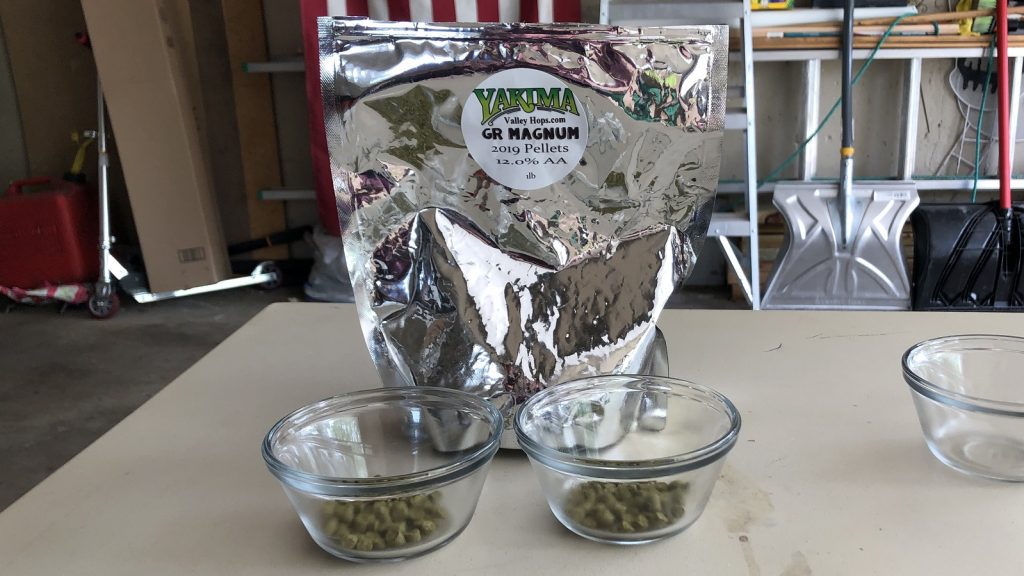
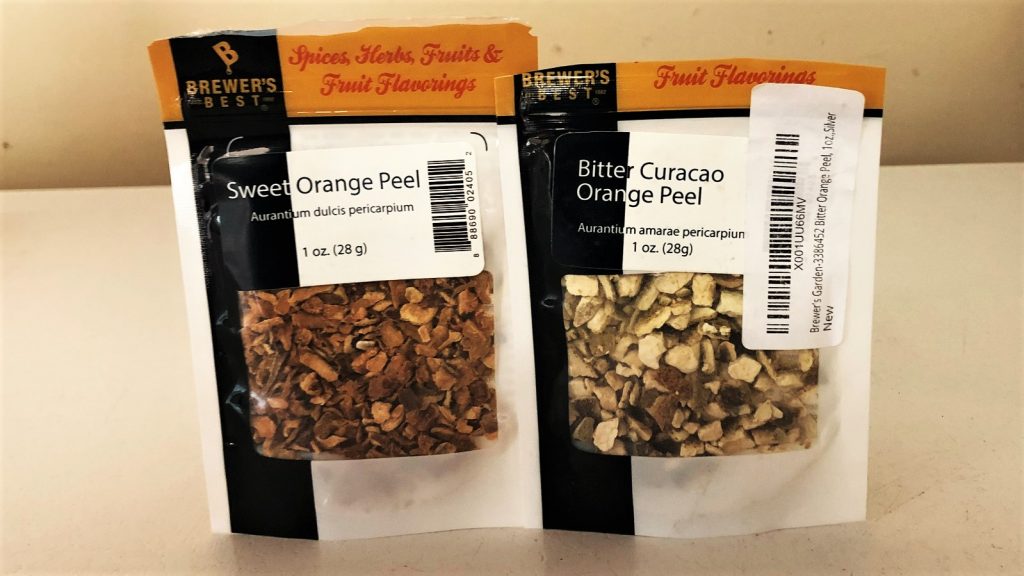
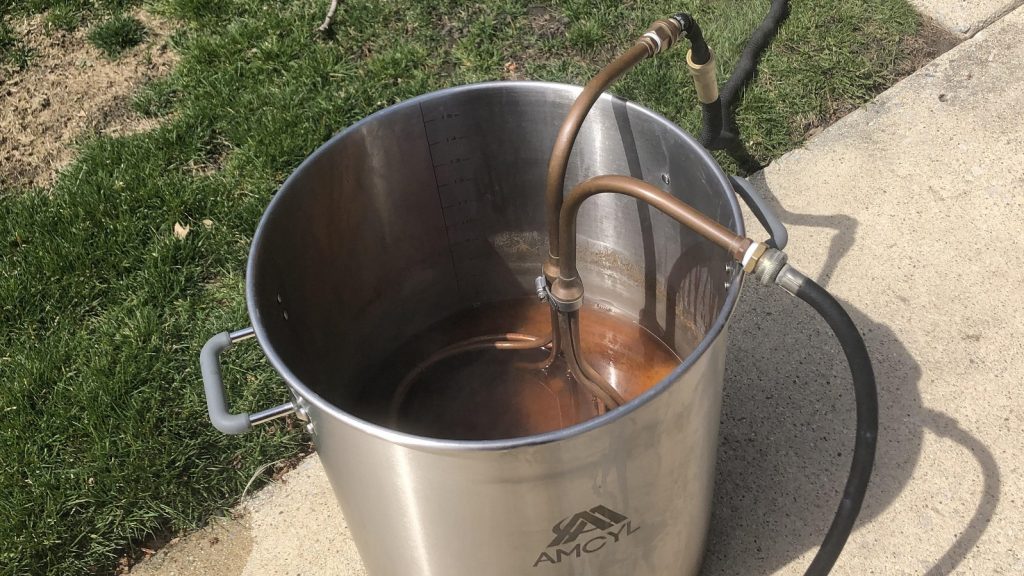
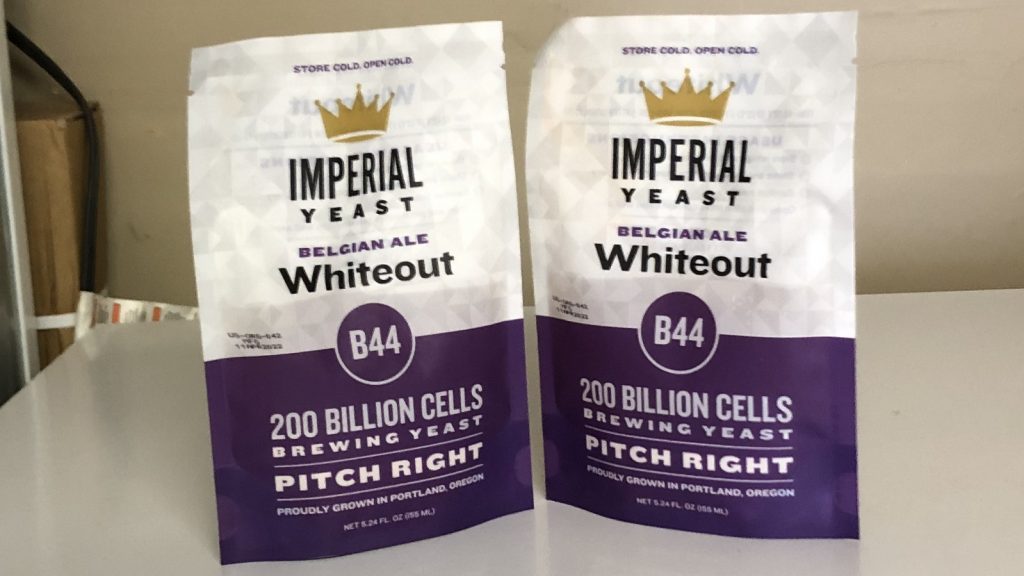











7 thoughts on “exBEERiment | Brewing With Fruit: Sweet vs. Bitter Orange Peel In A Belgian Witbier”
Maybe a better test would be fresh vs dried zest.
Or zest vs peel. That white stuff is said to impart a rather nasty off-flavour.
Good to know! I frequently make wits and have been wondering whether the type of orange peel makes a difference. Thanks!
After seeing these results… Would be interesting to see orange peel vs NO orange peel.
For me, no more worries about just using whatever fresh orange I have around.I was thinking the same as Nalcom… orange peel vs NO orange peel….
Camba, one of the largest “craft breweries” in Germany, makes a Witbier without any spices. The label still claims it possessed aromas of coriander and orange – my taste buds say otherwise, although I have to admit it is remarkably citrusy, much like a beer brewed with coriander seeds.
I always enjoy the Brulosophy experiments. …but in this case I do not fully agree with the conclusion. My statistical analysis skills are a bit rusty, but I interpret p=0.9 to indicate that there is somewhat of an ability for tasters to tell the difference between the 2 beers. It would be good to know what differences the 10 tasters who correctly identified the odd beer were tasting. Cheers.